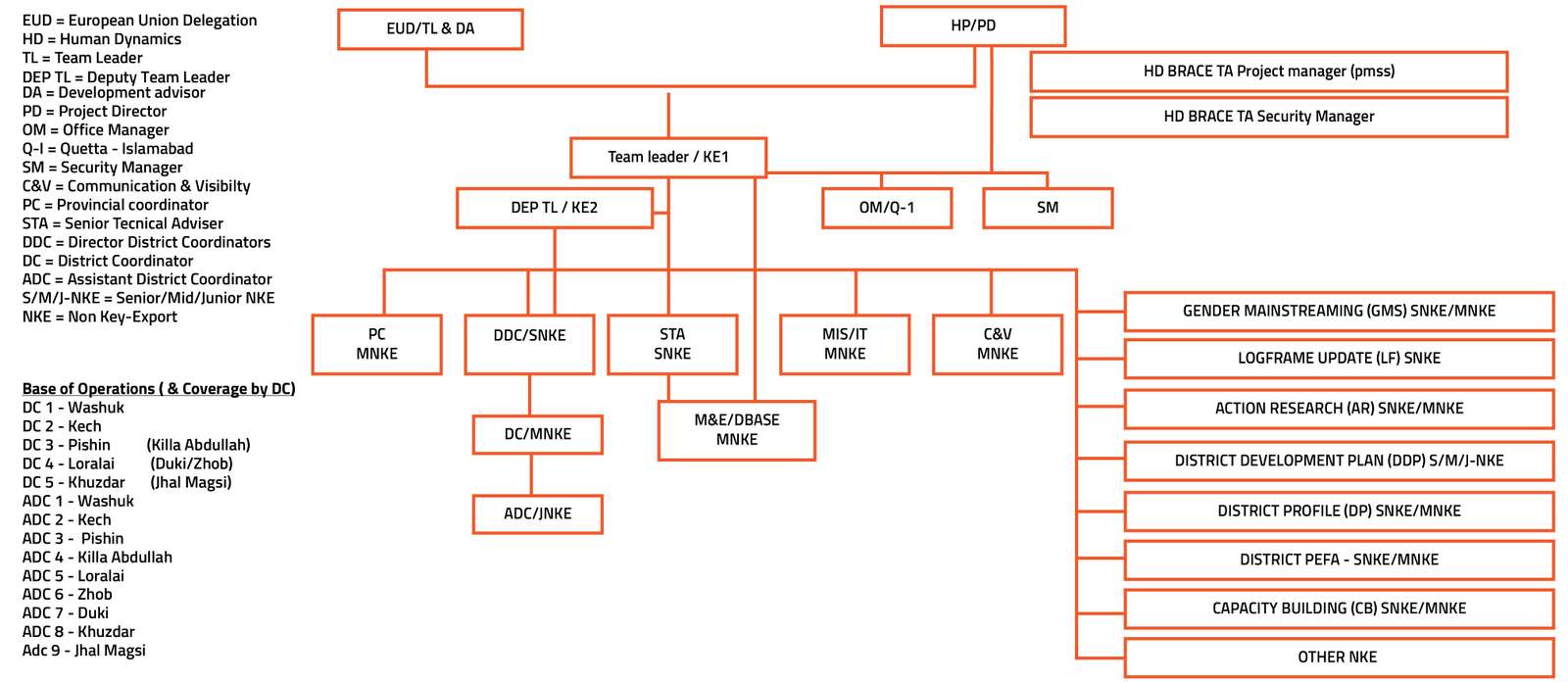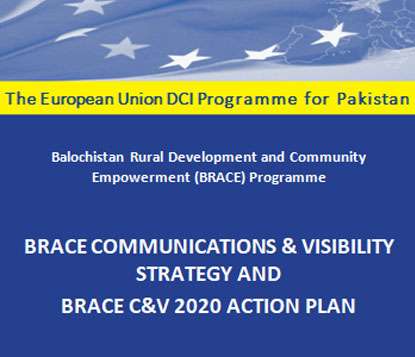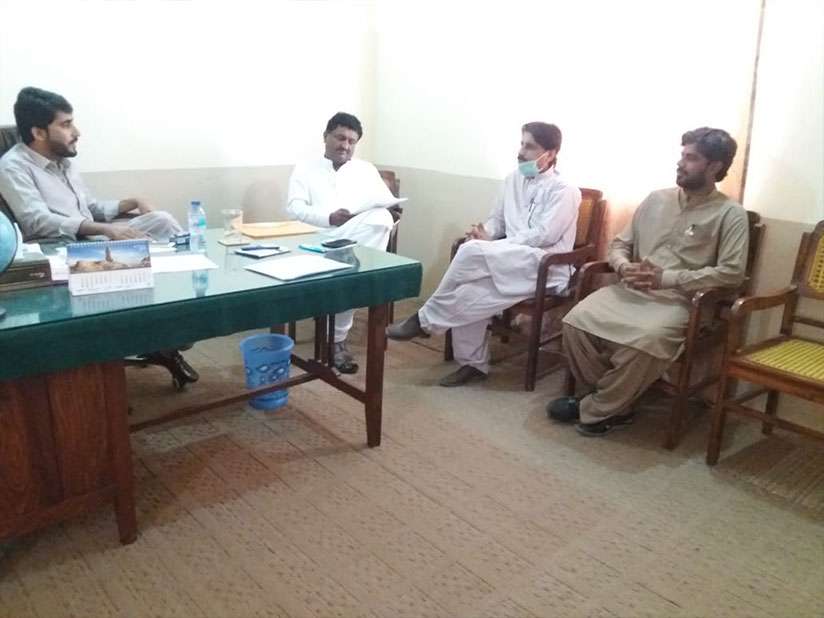BRACE Programme Outcomes & Outputs
BRACE Programme Synopsis
The box on the right presents a synopsis of the Balochistan Rural Development and Community Empowerment (BRACE) Programme
Our focal Government-counterpart is the Government of Balochistan Local Government and Rural development Department (LGRDD)
| Programme | Balochistan Rural Development and Community Empowerment (Brace) |
|---|---|
| Cost | Euro 45 Million (Rs 6 Billion) - GRANT - Gob Contribution Rs 500 million |
| Duration | 5 years (start date 1st July 2017 & end date 30th June 2022) |
| Impl. Partners: | RSPN, BRSP, NRSP, HD and OPM |
| Target Districts | 9-Pishin, Loralai, Duki, Killa Abdullah, Zhob, Jhal Magsi, Khuzdar, Washuk, Kech |
| Union Councils | 249 |
| Beneficiaries | 1.9 million citizens; 300,000 households |
| Sector | Rural Development |
| Focal Department | Local Government & Rural Development Department, GoB |
BRACE Objectives
The Programme has one Overall Objective and two Specific Objectives
BRACE Programme Overall Objective
(OO):The Overall Objective is to support the Government of Balochistan in reducing the negative impact of economic deprivation, poverty and social inequality, environmental degradation and climate change, and to turn this into opportunities to build and empower resilient communities participating actively in identifying and implementing socio-economic development activities on a sustainable basis in partnership with local authorities
BRACE Programme Specific Objectives 1
SO1: To empower citizens and communities and provide them with means enabling them to implement community-driven socio-economic development interventions, an increased voice and capability to influence public policy decision making through active engagement with local authorities for quality, inclusive, and equitable service delivery, and civic-oversight
BRACE Programme Specific Objectives 2
SO2: To foster an enabling environment for strengthening the capacities of local authorities to manage and involve communities in the statutory processes of the local public sector planning, financing and implementation process
BRACE Implementing Partners
BRACE is implemented through 3 components & 5 Implementing Partners (IP)
Components
Component 1
July 2017 – June 2022/BRSP-NRSP/Community Empowerment through social mobilization and social & productive assets and infrastructure creation, and RSPN/Facilitating implementation of the programme by the BRSP & NRSP, by ensuring quality control, standardisation in procedures, developing a common M&E framework, baseline approaches, and gathering of lessons learnt.
Component 2
DAI Human Dynamics (DAI HD)/July 2017 - June 2022 – Development and implementation of a community-led development policy framework, accompanied by technical and institutional-capacity building interventions
Component 3
Oxford Policy Management (OPM) / Sep 2014 – Aug 2019. Public Finance Management Reform
Implementing Partners
- BRSP - Balochistan Rural Support Programme
- NRSP - National Rural Support Programme
- RSPN - Rural Support Programmes Network
- OPM Oxford Policy Management
- DAI/HD Human Dynamics
- BRSP - Balochistan Rural Support Programme
- NRSP - National Rural Support Programme
- RSPN - Rural Support Programmes Network
- OPM Oxford Policy Management
- DAI/HD Human Dynamics
Balochistan Counterparts & Coverage
BRACE works closely with the Government of Balochistan at Provincial level, and in 9 Target Districts.

Government of Balochistan Counterparts


- Local Government & Rural Development Department (Lead Department)
- District, Tehsil, UC, Village- Loacal DC/LG Govenment/ Council Members
- Planning and Development Department
- Finance Department
- Balochhistan Rural Develpment Academy
- Line Department
BRACE RSP Implementing Partners work in 9 target Districts and target 300.000 households & 1.9 million citizens

BRACE Beneficiaries



For information on the work plans of the BRACE Implementing Partners, click on the RSPN, BRSP or NRSP LINKs at the bottom of the Home Page
BRACE Programme Results & Outcomes
Each BRACE Implementing Partner (IP) implements a series of Result Areas. The combined outputs or results of all the BRACE IPs are presented below
POLICY FOR GoB
RESEARCH & ADVOCACY
PFM REFORM
CAPACITY BUILDING FOR GOB OFFICIALS
TRAINING OF LOCAL BODIES
TECHNICAL & VOCATIONAL SKILLS TRAINING
COMMUNITY INVESTMENT FUND
MICRO HEALTH INSURANCE
SOCIAL MOBILIZATION
INCOME GENERATING GRANTS
COMMUNITY PHYSICAL INFRASTRUCTURE
REHABILITATION OF PWDS
Community Mobilization Theory of Change
The chart below explains the Community Mobilization (CM) Theory of Change (ToC), how CM Results lead to Outcomes, and to Poverty Alleviation Impact

BRACE Expected Results

BRACE Expected Outcomes

BRACE Expected Impact
BRACE PROGRAMME and SDGs
60 to 65 % of the SDG’s are related to Rural development. BRACE is therefore to contribute directly to following SDGs in Balochistan
BRACE is halfway (February 2020) and the full impact on SDGs cannot yet be assessed
BRACE AND SDG LOCALISATION
- Match SDG Indicators with RSP Socio-Economic Baseline at Village/UC/District levels
- Assess at Village/UC/District levels Progress made by BRACE/RSPs Socio-Economic CD/CE Interventions in Relevant SDG Indicators
- Report on Village/UC/District Progress Made in SDGs through BRACE > to GoB (P&D SDG Unit) , to EUD and to DPs and Seek Their Endorsement
BRACE AND SDG ACHIEVEMENT
- Design Methodology to Aggregate BRACE Socio-Economic Progress in Selected SDG Indicators.
- Facilitate Upward Aggregation of BRACE Impact on SDG from Village, UC, District, to Province Levels
- Carry Out District-Specific and Province Wide Aggregation Surveys
- Report the District/Province Progress on SDGs.
- P&D SDG Unit to Reports to Federal SDG Unit, BRACE reports to EUD.
- GoB SDG Unit Report (to include Chapter on impact of BRACE on SDGs)
The TA Component aims to facilitate the Government of Balochistan (GoB) to design and implement an innovative GoB Community-Driven Local Government and Rural Development (CD-LG&RD) Policy & Fiscal Framework
The TA Component has one Overall Objective & two Specific Objectives
BRACE Programme Overall Objective
(OO):The Overall Objective is to support the Government of Balochistan in reducing the negative impact of economic deprivation, poverty and social inequality, environmental degradation and climate change, and to turn this into opportunities to build and empower resilient communities participating actively in identifying and implementing socio-economic development activities on a sustainable basis in partnership with local authorities
BRACE Programme Specific Objectives 1
SO1: To empower citizens and communities and provide them with means enabling them to implement community-driven socio-economic development interventions, an increased voice and capability to influence public policy decision making through active engagement with local authorities for quality, inclusive, and equitable service delivery, and civic-oversight
BRACE Programme Specific Objectives 2
SO2: To foster an enabling environment for strengthening the capacities of local authorities to manage and involve communities in the statutory processes of the local public sector planning, financing and implementation process
The BRACE TA Component aims to deliver it Objectives through outputs in five Result Areas
RA 1: Dedicated Policy Framework LG&CD Sector: For community-led local deliver economic, environmental and social outcomes, involving local government/ authorities and communities and their institutional arrangements for development and participation in local governance processes for effective and sustainable service delivery in partnership with local governments/authorities.
RA 2: Improved Capacities of Local Governments/Authorities: To become “developmental”, mobilise their resources to reach out to communities and systematically involve them in planning, co-resourcing and managing local development activities.
RA 3: The Balochistan Rural Development Academy (BRDA) Capacitated: BRDA to deliver a comprehensive capacity-building programme on community-driven development and local governance.
RA 4: Technical & Institutional Capacities IPs Strengthened: Implementing Partners (IP) to effectively support the GoB in its objective of improving (integrated) public service delivery, at (sub-) District and Village levels.
RA 5: Cross-cutting/Managerial Tasks by TA: Specific Cross-cutting tasks in support of the project objectives and achievement of the expected results
BRACE TA Selected Outputs As at March 2020 the following TA Outputs have been delivered
Result Area 1: Dedicated Policy Framework LG&CD Sector: For community-led local deliver economic, environmental and social outcomes, involving local government/ authorities and communities and their institutional arrangements for development and participation in local governance processes for effective and sustainable service delivery in partnership with local governments/authorities..

Organisational and institutional framework for the GoB counterpart institutions and stakeholders:
The TA continues to assist the GoB Secretary/Chief Foreign Aid (CFA), Planning and Development (P&DD) in its role as the Chair/Convenor/Coordinator of the...
Read More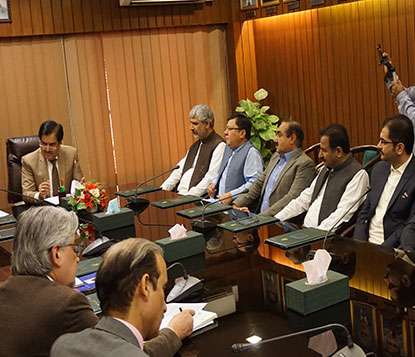
Sindh Exposure Visit by the Gob Delegation:
The TA organized a 4-day Sindh Exposure Visit, for a group of Balochistan BRACE Programme Stakeholders from 11 to 15 March, 2020 as a follow-up to a similar visit to Khyber Pakhtunkhwa (KPK)...
Read More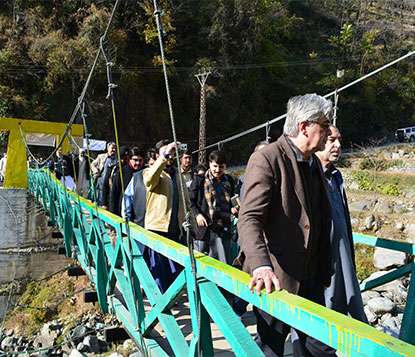
Khyber Pakhtunkhwa Exposure Visit by the Gob Delegation:
In December 2019, the TA organized a three-days KPK Exposure Visit, for a group of 20 officials (GoB, RSP. and TA). The purpose was to enhance the understanding funded Community Driven Local Development (CDLD)...
Read MoreResult Area 2: Improved Capacities of Local Governments/Authorities: To become “developmental”, mobilise their resources to reach out to communities and systematically involve them in planning, co-resourcing and managing local development activities

District Coordination Induction Training Course:
The TA facilitated the complementarity and synergy between RSP and GoB systems through Supply Side and Demand Side drivers through the ongoing series of “District Coordination” training/capacity-building events...
Read More
Joint District Development Coordination (JDDC) meetings:
JDDC Meeting at District level Our TA District Coordinators and Assistant District Coordinators, based in the Deputy Commissioners’ Offices, play a key role in the reactivation of the Joint District Development Committee ...
Read MoreResult Area 3: The Balochistan Rural Development Academy (BRDA) Capacitated: BRDA to deliver a comprehensive capacity-building programme on community- driven development and local governance
-Training-Course.jpg)
District Coordination Capacity-Building and Training
The District Coordination (DC) Training Course started in December 2019 with the DC Induction Course. The DC Course directly strengthens the capacity of the BRDA...
Read More
Conducting capacity assessment and developing the Capacity Building Plan for the BRDA:
BRACE TA will conduct a rapid capacity assessment and develop a BRDA capacity building plan that will address Institutional...
Read More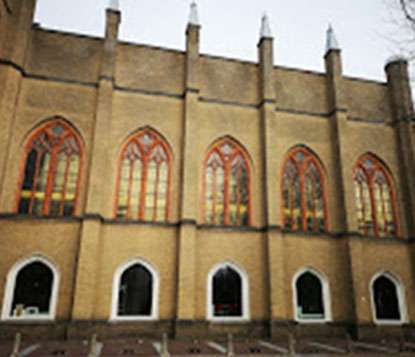
Facilitating foreign trainings and exchange visits:
The Hague Academy for Local Government (The Netherlands) and BRACE TA will initiate a twinning arrangement between two institutions, aiming...
Read More
Presentation of certificate ceremony at the end of the DC Induction Course held on 2 – 4 December, 2020 at the BRDA main training hall in Quetta
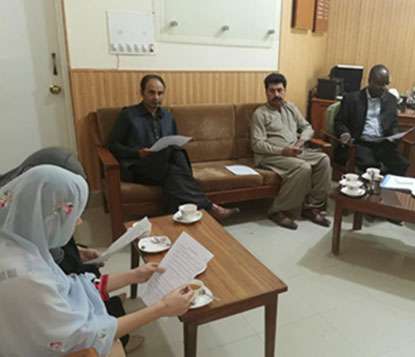
The BRACE TA team conducts the introductory capacity assessment session with the BRDA Director-General, staff and lecturers, in February 28, 2020 at the BRDA main campus in Quetta.
RA 4: Technical & Institutional Capacities IPs Strengthened: Implementing Partners (IP) to effectively support the GoB in its objective of improving (integrated) public service delivery, at (sub-) District and Village levels.

BRACE TA Exit Strategy:
BRACE TA Contributed to the IPs EXIT Strategy, which aims at establishing the right conditions and criteria, to ensure that Community Institutions are sustainable and can become mature partners in a GoB CD-LG&RD Policy Framework.
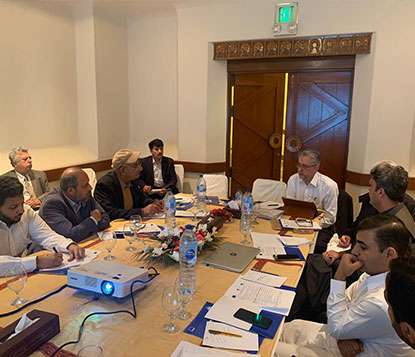
Facilitating inter-Implementing partners’ Coordination:
BRACE TA facilitates inter-IP Coordination, through the BRACE Operational Steering Committee (OSC) Meetings
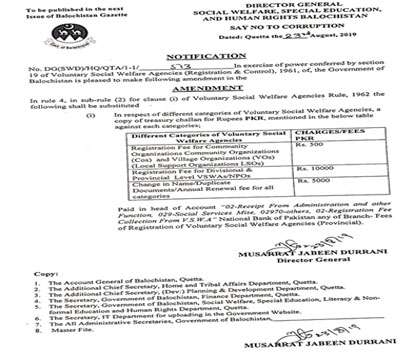
Facilitating LSOs in the districts:
BRACE TA plays a facilitating role to seek Registration and Renewal Fee Waivers/Reductions for the LSO in the 9 Target Districts.
RA 5: Cross-cutting/Managerial Tasks by TA: Specific Cross-cutting tasks in support of the project objectives and achievement of the expected results
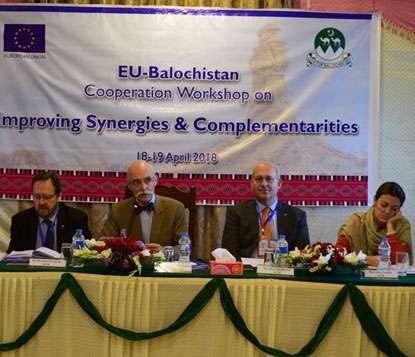
EU-Balochistan Cooperation Workshop on Improving Synergies and Complementarities:
The 2-days consultative Balochistan Synergies Workshop brought together multiple stakeholders (RSPs, GoB counterpart and cognate line departments, the EU, GIZ...
Read More
Development of the Gender mainstreaming Strategy (GMS) and related activities:
The Gender Mainstreaming (GMS) assignment started in 2019 and resulted in key outputs such as: an updated GMS Strategy Document and GMS Action plans by each...
Read More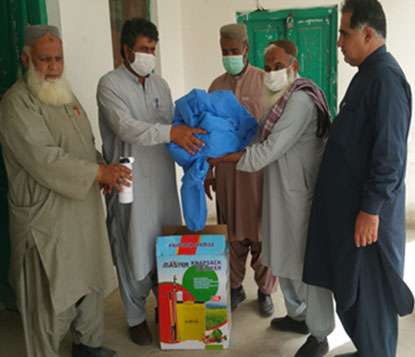
The BRACE TA DC/ADC staff
The BRACE TA DC/ADC staff assisting the Washuk Deputy Commissioner’s Office to distribute COVID-19 PPEs and humanitarian relief supplies in April, 2020
Read More























